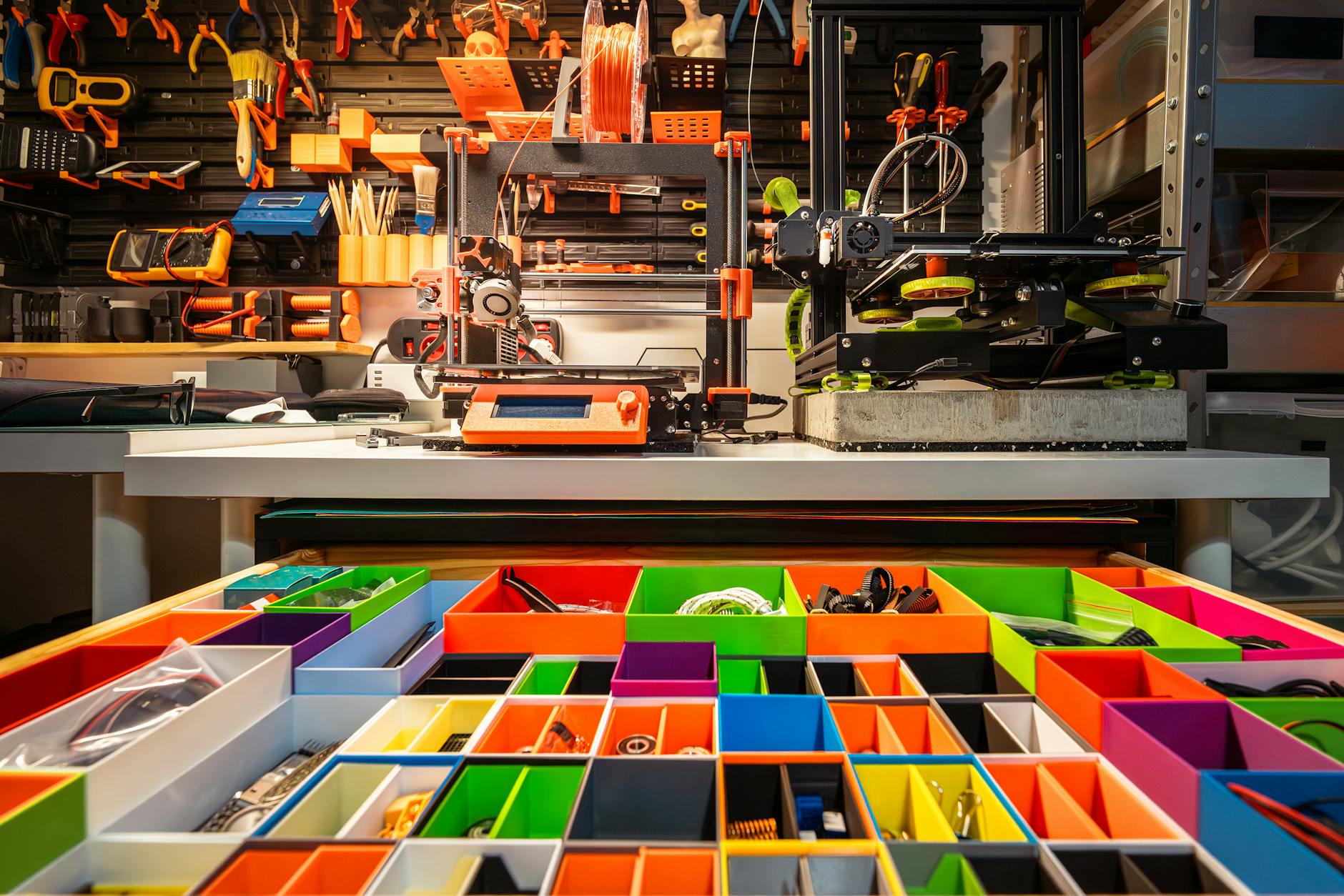
Introduction
In today’s tech-driven world, smart home gadgets are revolutionizing how we interact with our living spaces. These devices not only enhance convenience but also offer a level of control and customization that was previously unimaginable. Imagine adjusting your home’s lighting or temperature with just a simple voice command. The possibilities are endless and exciting.
While purchasing these gadgets off the shelf is an option, creating your own smart home gadget offers a unique sense of achievement. DIY projects provide an opportunity to learn valuable skills such as programming, electronics, and problem-solving. Moreover, the satisfaction derived from bringing a personal creation to life is unmatched. By undertaking such projects, you not only save money but also tailor solutions specifically to your needs.
Embarking on a DIY smart home gadget project can be a rewarding journey. Throughout this article, we’ll explore the steps and considerations for creating your own innovative solutions.
Step 1: Choose Your Gadget

The first step in your DIY smart home journey is selecting the type of gadget you wish to create. This decision will set the foundation for your entire project. Start by considering functionality—what problem do you want to solve, or which aspect of your home do you wish to enhance? Perhaps you’re interested in automated lighting, a smart thermostat, or a home security system.
Next, assess the complexity of the project. If you’re new to DIY electronics, you might want to start with a simpler gadget, like a smart light switch, that involves basic programming and wiring. For those with more experience, building a custom voice assistant or smart mirror could be an exciting challenge.
Finally, let your personal interest guide you. Choose a project that excites you and aligns with your passions. Whether it’s energy efficiency, security, or entertainment, your enthusiasm will drive your creativity and persistence.
Research existing smart home gadgets for inspiration and identify the features you’d like to incorporate or improve upon. This will help you refine your idea and provide a clear vision for your project. With a well-chosen gadget, you’re ready to dive into the next steps of creation.
Step 2: Gather Materials and Tools

Once you’ve decided on your smart home gadget, it’s time to gather the materials and tools needed for your project. Most DIY smart gadgets require basic components like a microcontroller (e.g., Arduino or Raspberry Pi), sensors, connectors, and power supplies. Depending on your specific project, you might also need additional items such as LED lights, relays, or a display screen.
For tools, ensure you have a soldering iron, wire cutters, a multimeter for testing, and a screwdriver set. These are essential for assembling and troubleshooting your gadget. You might also benefit from a breadboard for prototyping and testing circuits before finalizing the design.
To keep your project budget-friendly, consider purchasing components from online electronics retailers like Adafruit or SparkFun. These platforms often offer competitive prices and a wide range of products. Additionally, check out local electronic parts stores or surplus shops for affordable alternatives.
Remember, creativity is key in DIY projects. If certain components are unavailable or expensive, explore alternative solutions or repurpose materials you already have. With the right materials and tools in hand, you’re ready to bring your smart home gadget to life.
Step 3: Design the Circuit

Designing the circuit is a crucial step in creating your smart home gadget. It involves connecting components in a way that enables them to function together effectively. Begin by sketching a basic diagram to visualize the connections between your microcontroller, sensors, and other components. Understanding basic electronics concepts like voltage, current, and resistance will help ensure your circuit operates smoothly.
To assist with your design, consider using software tools like Fritzing or Tinkercad Circuits. These platforms offer user-friendly interfaces for creating and simulating electronic circuits. They allow you to experiment with different configurations and troubleshoot potential issues before physically assembling the components.
When designing your circuit, pay attention to the power requirements of each component. Ensure your power supply can handle the total load, and use resistors to manage the current flow as needed. Incorporate safety features such as fuses or diodes to protect against short circuits or reverse polarity.
Once satisfied with your design, transfer the schematic to a breadboard for a prototype build. This will enable you to test and refine the circuit before finalizing it on a printed circuit board (PCB) if necessary. With a well-designed circuit, you’re one step closer to a fully functional smart home gadget.
Step 4: Assemble Your Gadget

With your circuit design ready, it’s time to assemble your smart home gadget. Start by gathering all components, ensuring they are easily accessible. Follow your circuit diagram closely and connect each part on your breadboard as planned. Begin with the power supply and work through sensors and outputs, checking connections as you go.
When soldering components onto a PCB, take your time and ensure clean, secure joints. Use a soldering stand to keep your hands free and avoid burns. Always work in a well-ventilated area to disperse fumes, and wear safety glasses to protect your eyes. Double-check each connection to prevent shorts and ensure the circuit’s integrity.
Common pitfalls include loose connections and incorrect polarities. Use a multimeter to verify connectivity and check for continuity before powering the device. If using batteries, ensure they’re installed correctly and test the circuit with a limited power supply initially.
Once assembled, conduct a final inspection to ensure all components are securely in place. Then, power up your gadget and perform initial tests to confirm it operates as intended. With patience and careful attention to detail, your assembled gadget will be ready to integrate into your smart home ecosystem.
Step 5: Program the Device

Programming is the brain behind your smart home gadget, transforming simple hardware into a functional device. Start by selecting a programming language compatible with your microcontroller. Arduino is a popular choice, with its C/C++-based language, while Python is commonly used for Raspberry Pi projects due to its simplicity and readability.
If you’re new to coding, there are numerous resources available to help you get started. The Arduino website offers comprehensive guides and tutorials, while platforms like Codecademy and Coursera provide courses tailored for beginners.
When writing your program, focus on defining the functions you want your gadget to perform. Break down tasks into smaller, manageable code blocks. For instance, if you’re building a smart thermostat, program sensors to read temperature data and trigger actions based on thresholds you set.
Test your code frequently and make adjustments as needed. Use comments in your code to document the purpose of each section, making it easier to troubleshoot issues. With a well-written program, your gadget will be equipped to respond intelligently to its environment, enhancing your smart home experience.
Step 6: Test and Troubleshoot

Testing is a crucial step in ensuring your smart home gadget functions as intended. Begin by powering on the device and observing its behavior in a controlled environment. Verify that each component responds correctly and that the device executes programmed tasks without errors. Pay attention to any unusual noises, heat, or delays in response.
If your gadget doesn’t perform as expected, don’t worry. Troubleshooting is an integral part of the DIY process. Start by checking all physical connections; loose wires or poor solder joints are common culprits. Use a multimeter to confirm that voltages and currents match expected values. If your circuit appears intact, examine your program for logical errors or typos.
Common issues include incorrect sensor readings or unresponsive outputs. For sensors, ensure they’re properly calibrated and positioned. For software glitches, consider adding debug statements to your code to pinpoint where execution may be failing. Consult online forums or communities, such as r/Arduino, for advice and solutions from fellow hobbyists.
Through systematic testing and troubleshooting, you’ll refine your gadget until it operates seamlessly. This process not only ensures reliability but also deepens your understanding of the interplay between hardware and software in smart home technologies.
Conclusion
Creating your own smart home gadget is a rewarding journey that combines creativity, technical skills, and problem-solving. From choosing your gadget to gathering materials, designing circuits, assembling, programming, and troubleshooting, each step offers valuable learning experiences. Embrace the satisfaction that comes with transforming an idea into a functional device tailored to your needs.
As you complete your first project, you’ll gain confidence and a deeper understanding of electronics and programming. Let this be the beginning of your exploration into the world of DIY technology. Continue experimenting, learning, and innovating. The future of smart homes is in your hands. Share your creations, inspire others, and enjoy the endless possibilities of DIY smart home projects.
Ready to take on your next challenge? Dive deeper into the realm of DIY and discover what else you can invent. The journey is just as important as the destination, and every project brings you closer to mastering the art of innovation.





